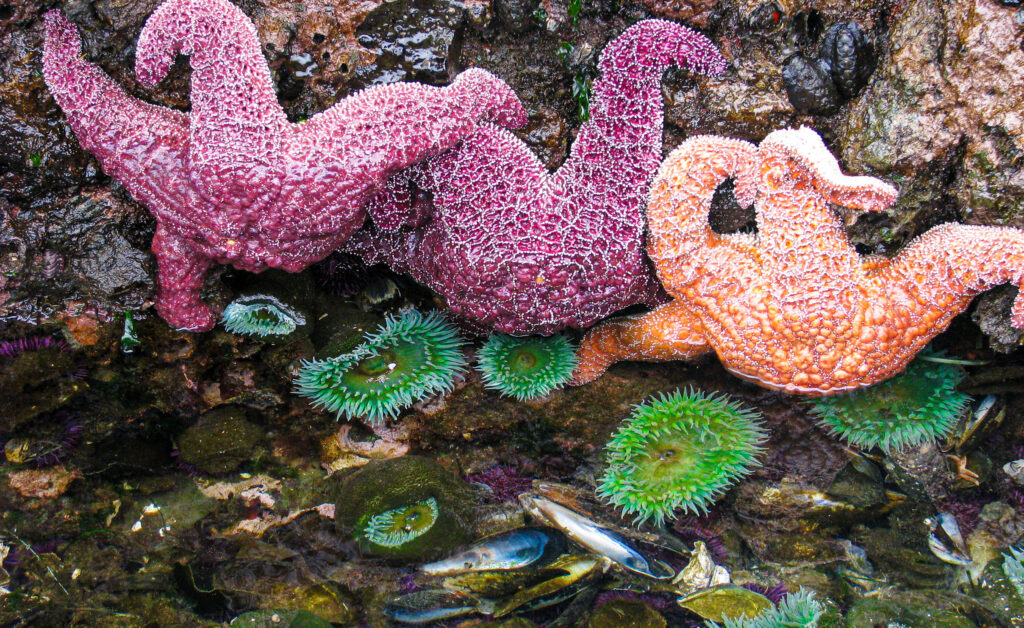Words & Photo Tina Kelly
World Ocean Day and Ocean Week Victoria are behind us – one day, one week, that shines a spotlight on the marine environment and encourages us to learn more about the ocean and our connection to it. The hope – a better understanding and a stronger connection will inspire caring and conservation.
Summer weather, summer tides and summer vacations are good motivators to keep the ocean learning going and meet your intertidal neighbours. To get the most out of exploring the world between the tides and do it respectfully, follow these tips.
Check Tides
As a general rule, low tides happen during daylight hours in spring and summer, and over night in winter. Now is the time and to make the most of your access to low tide world, visit www.tides.gc.ca.
Tread Lightly
Plant your feet carefully for two reasons. One, your own safety – rocks and algae are slippery. And two, to minimize damage to animals and their habitats.
Pause, Be Still, Go Slow
At low tide animals need to blend in and hide. In a tidepool, that means they stop moving as you approach. Do your best impression of a hunting heron. If YOU stay still, you just may witness when they begin to move again; you’ll miss that opportunity if you go too fast. Slowing down also encourages looking in cracks and crevices, other safe spaces for animals.
Lift, Look, Lower
Use this alliteration as a guide to always put rocks back where, and how, you found them. Each rock is a habitat unto itself and different animals are adapted to live on or under; rocks provide shade and underneath stays wet.
Be Gentle
Observe, and leave, animals where they are. Some are adapted to secure tightly to rocks; this prevents drying out and predation. When it comes to fish, best practice is no touching. They have a protective coating over their scales we shouldn’t disrupt.
Look Up, Look Out
After squatting and stooping to look among the rocks and in tidepools, my aging back appreciates a good stretch. I take the opportunity to do that frequently; it allows me to spot other animals that inhabit the water and sky – eagles, shore birds, seals and whales can be missed if you always have your head down.
Identify Your Finds
There are many easy-to-use field guides to help you identify and learn more about your finds. Laminated ID cards are perfect for withstanding inclement weather or a drop in a tide pool.
During May’s extreme low tides, I explored Glass Beach, a location I’ve visited countless times. I discovered a new-to-me species and a field guide identified red sea buttons, a type of social sea squirt.
Your photos can be uploaded to identification apps. iNaturalist is a useful tool to record what you find and provides help with identification.
Park Mantras
“Leave no trace” and “pack it in, pack it out” are longtime mantras of park systems worldwide. A newer saying goes beyond being responsible for your own garbage and impact and encourages removing any trash you encounter — “take three for the sea.” Take only trash. Leave shells and other marine-related bits on the beach. Some are used by other animals and they also break down and return compounds back into the ecosystem.
Happy exploring!




